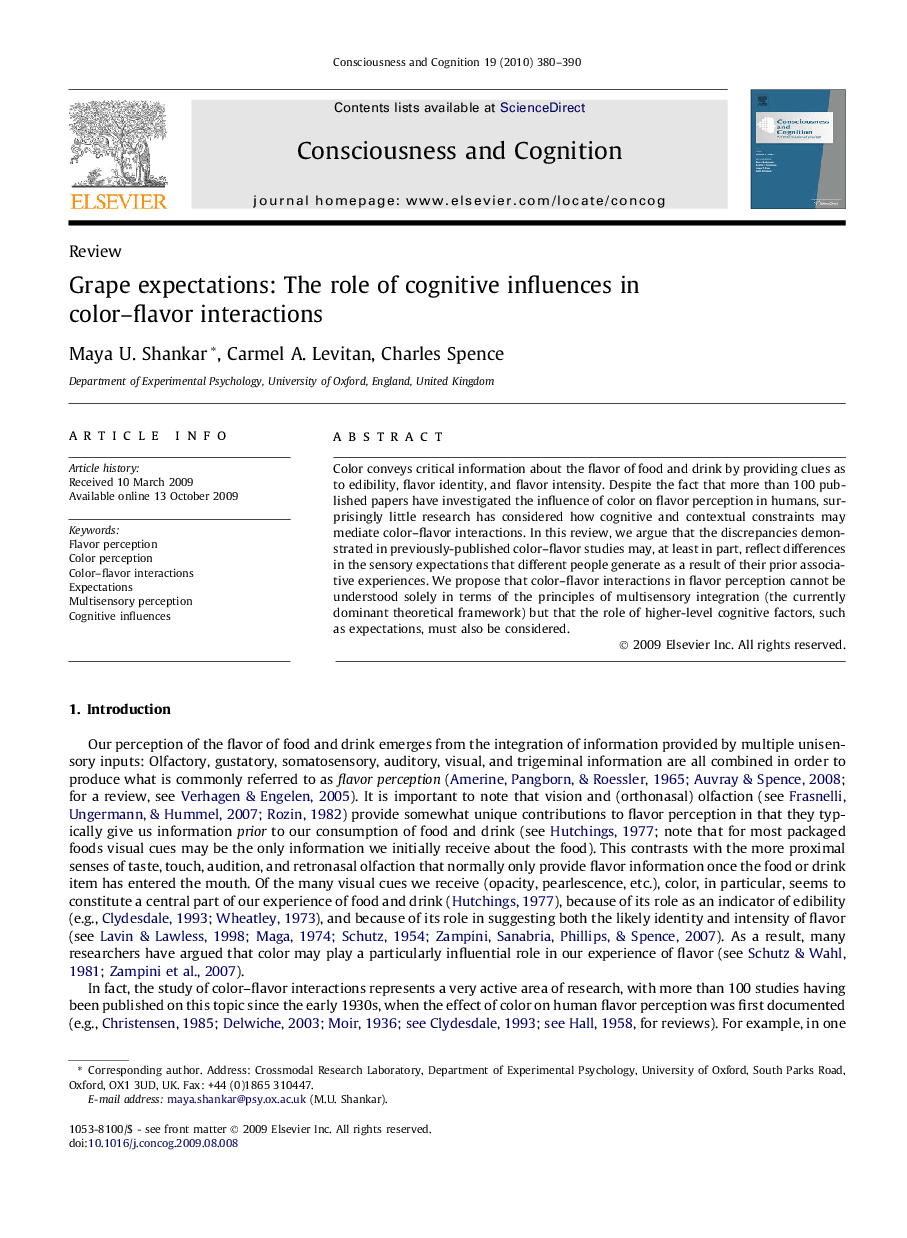| Article ID | Journal | Published Year | Pages | File Type |
|---|---|---|---|---|
| 10458786 | Consciousness and Cognition | 2010 | 11 Pages |
Abstract
Color conveys critical information about the flavor of food and drink by providing clues as to edibility, flavor identity, and flavor intensity. Despite the fact that more than 100 published papers have investigated the influence of color on flavor perception in humans, surprisingly little research has considered how cognitive and contextual constraints may mediate color-flavor interactions. In this review, we argue that the discrepancies demonstrated in previously-published color-flavor studies may, at least in part, reflect differences in the sensory expectations that different people generate as a result of their prior associative experiences. We propose that color-flavor interactions in flavor perception cannot be understood solely in terms of the principles of multisensory integration (the currently dominant theoretical framework) but that the role of higher-level cognitive factors, such as expectations, must also be considered.
Related Topics
Life Sciences
Neuroscience
Cognitive Neuroscience
Authors
Maya U. Shankar, Carmel A. Levitan, Charles Spence,
